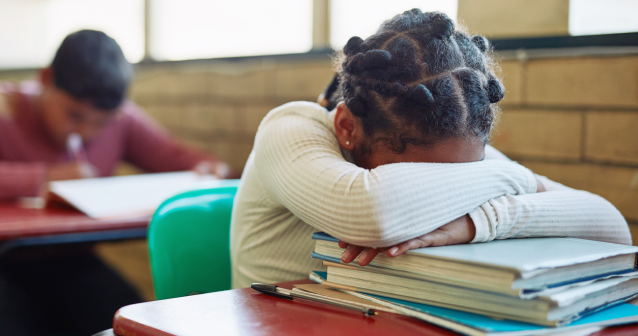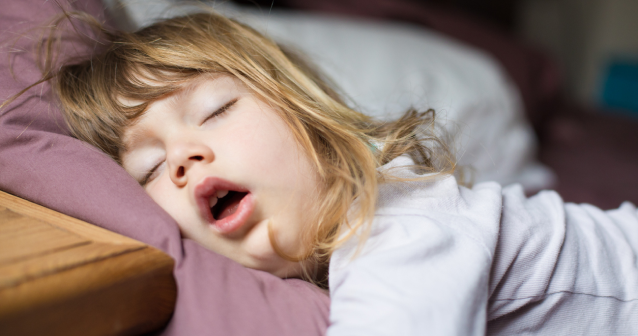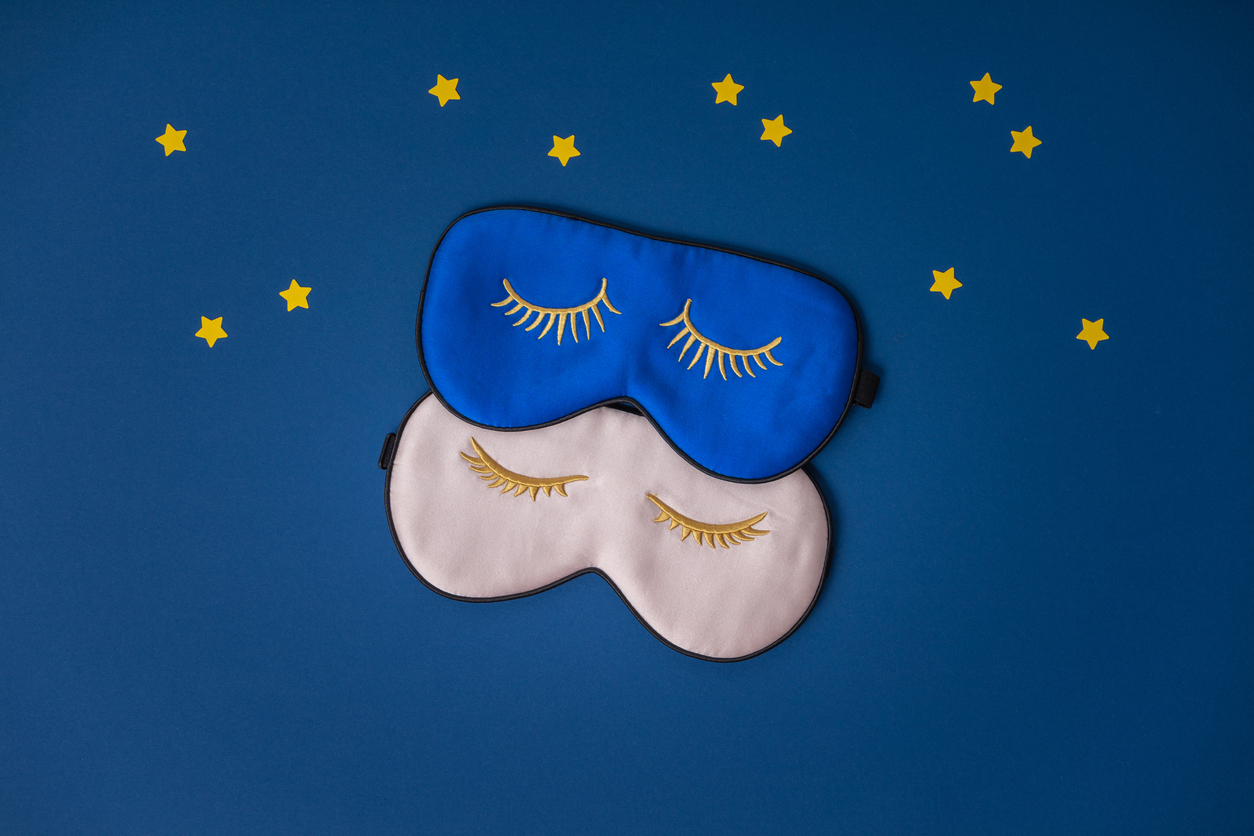Getting enough shut-eye is important when you’re rushing around looking after the family – and perhaps you have work on top, too. If you’re caring for a young baby, sleepless nights come as standard. But sleep problems don’t just happen in those early months. As many a bleary-eyed parent will tell you, toddlers, children and teens all struggle with sleep problems, too.
In fact, children’s sleep problems can happen at any age. As you’ll know only too well if your child isn’t sleeping well, disrupted nights take their toll on the whole family. Lack of sleep leaves everyone shattered and you worrying about how your child will manage during the day, especially if they go to school. But there are lots of simple things to try that can help.
Is my child getting enough sleep?
It may be small comfort if you’re desperate for a good night’s kip, but you’re certainly not alone.
In the US, a large study found up to a third of school aged children (36% of 6 to 12-year-olds and 32% of 13 to 17-year-olds) don’t get an ideal amount of sleep. In the UK, the figure is over a quarter (27%). Girls are more likely to struggle to sleep than boys.
Having trouble falling asleep, staying asleep or waking up early happens to children just like it does adults. It’s quite common, affecting around 15% of toddlers, 20% of school-aged children and 11% of teens.
Just as every child is unique, so is their sleep. Sleep issues will vary depending on how old your child is, and can include anything from nightmares and sleepwalking to bed wetting and sleep apnoea. For some families, sleep disturbances aren’t a problem, but if it’s something you want to change, there is help available. Tackling sleep issues can feel like an impossible task, especially if you’re already very tired, but there are many tried-and-tested solutions that have been proven to work.
You might also be worrying if there’s something else going on. When is it a phase and when should you get medical help? Read on to find out things to look out for and when you should seek help.
How much sleep does my child need?
Every child sleeps differently. Just like some adults are early birds and others night owls, some children fall asleep as soon as their head hits the pillow while others are up and down for hours. Children’s sleep is so variable there really is no 'normal' – some sleep through and some wake frequently for years. This can make it hard for parents to know what sleep patterns you should be aiming towards and if your child is getting enough overall.
It’s natural to feel worried, but the majority of sleep problems aren’t serious and are in fact normal. Many get better on their own over time and lots of help is available.
Research has found that, for optimal health and development, you should aim to help your child get the following amount of sleep where you can. Don’t worry if your child isn’t getting these amounts every single night, the pattern over time will make the most difference as they develop:
- babies aged 0-3 months – 14-17 hours, including naps
- babies aged 4-12 months – 12-16 hours, including naps
- toddlers aged 1-2 years – 11-14 hours, including naps
- children aged 3-4 years – 10-13 hours, which may include a nap
- children aged 6-12 years – 9-12 hours
- teens aged 13-18 years – 8-10 hours
As a further guide, try this sleep calculator.
As you know yourself, a good night’s rest has a big impact on how we feel the next day. If we’re tired, it can affect performance and mood, attention span, memory and how happy we feel. It’s just the same for children.
A child that’s short on sleep can swing between grumpy one minute and hyperactive the next. Sleep is important for children’s physical, emotional and social development, and their growing brain. Disturbed nights have even been linked to an increasing risk of obesity, allergic rhinitis (hay fever) and mental health problems in teens.
Signs your child has sleep problems
If you think your child isn’t getting enough sleep for their age most nights, whether it’s because they’re going to bed too late or they’re waking up a lot in the night, then it could be time to look at why.
Sleep-deprived children can show different symptoms to adults, which can make spotting the signs tricky. Even if your child or teen is very low on sleep, they may not appear drowsy during the day. Extremely tired children may even go the other way and be hyperactive or have trouble concentrating.
Other signs to look out for during the day, which could suggest your child may not be getting enough sleep, include:
- they don’t show interest in school or learning
- they’re drowsy or sleepy during the day
- they have trouble concentrating and often seems spaced out
- They often seem sluggish
- they fall asleep in the car or when not in their bed
- you have trouble waking them in the morning
There could also be some clues there is an underlying problem, meaning your child isn’t getting the quality sleep they need. For example, they:
- snore loudly or breathe noisily
- move around a lot in their sleep
- sweat a lot during the night
- wake up a lot because they wet the bed
- struggle to go to sleep at night

Reasons why your child can’t sleep and ways to tackle it
Separation anxiety and bedtime fears
Many ‘sleep problems’ in younger children are actually a normal part of their development. For example, often small children are scared of being on their own at night – something called ‘separation anxiety’. Likewise, fear of the dark can be a big factor.
WHY
These things might result in bedtime battles with your child refusing to go to bed, difficulties getting to sleep or waking through the night. This is most common in children aged 0-5 years, but can carry on much longer.
Often it’s just a phase that will go away by itself after a short period and many families develop ways to cope to ensure that everyone still gets enough sleep. But for some it can become a constant problem that disrupts your sleep as well as your child’s and causes issues for both of you during the day, too.
WHAT TO TRY
Parenting decisions are tricky and personal – only you can decide what is right for your child. There are lots of different methods to try if you want to help your child sleep more soundly for longer. Some things to consider include:
- creating a safe and secure sleep environment – it should be a place to sleep not play, so remove toys and screens at bedtime or keep them in a different room
- tailoring their bedroom to their needs – if you think they’re scared of the dark, a night light might help
- helping them self-settle – if they are waking a lot in the night things like giving them a cuddly toy (if they are over 1 year) or a baby monitor to reassure them might help
- For younger children especially, rewards like a sticker chart to reinforce good behaviour can help
- being patient, consistent and committed are key
Unhelpful habits
It’s important to remember that sleep problems are very common in small children. Many have trouble falling asleep and need comfort from a parent when going to bed or if they wake during the night. But if disturbed nights are continuing into older childhood, unhelpful habits might be the cause.
From having too much chocolate or drinking too many energy drinks to staying up watching TV at night or playing games on screens, daily habits can affect sleep in a big way. Depending on what stage your child is at, how you try to manage it will vary, as teenagers will need a different approach to toddlers.
WHY
Good sleep hygiene starts during the day. Caffeine is a stimulant that can keep both adults and children awake and make it harder to settle to sleep. It’s found in tea, coffee, fizzy drinks, energy drinks and chocolate, so have a look at what your child’s eating and drinking to see if caffeine could be the culprit.
Children are also thought to be even more sensitive to the ‘blue light’ that comes from screens. It keeps us awake by suppressing our sleepy hormone melatonin. Napping too much during the day can also affect night time sleep.
Sound all too familiar? If you’re having sleep issues yourself, our piece on adult sleeping difficulties can help.
WHAT TO TRY
There are some very simple habits, often referred to as good ‘sleep hygiene’, that you can get into as a family, no matter how old your child is. These changes can make a big difference to your child’s sleep and improve your own sleep in the process:
- encourage a regular bedtime routine, such as having a bath, changing into pyjamas and reading a book, and help your child stick to it as much as possible
- have consistent bedtimes and wake-up times, even at the weekends – they won’t love you for it, but keep weekend lie-ins for teenagers to an extra hour at most
- avoid TVs, computers and phones at least an hour before bed – and no screens in the bedroom. You could move screen time to earlier in the day for younger ones and consider a technology curfew an hour before bed for older children
- stick to regular meal times as much as you can
- encourage your child to be physically active during the day, especially outdoors
- restrict time in bed to actual sleep time
- don’t let them have caffeine, especially in the evenings, and try to cut back on sugar
- keep their bedroom quiet, cool and dark
Nightmares
Nightmares are scary, sad or upsetting dreams that wake your child up. They usually happen late in the night during REM sleep – the stage when we usually dream. After a nightmare, your child may have trouble going back to sleep. They’ll often remember their dream in the morning.
WHY
Many children struggle to separate what’s real and what’s imaginary and this can lead to very real, frightening nightmares. Older children may find that issues or feelings they’re having during the day can lead to disturbing dreams at night. Nightmares can also be caused by worry, anxiety, bullying and stress.
WHAT TO TRY
If your child has a nightmare, there are things you can try that might help:
- remind your child it was only a dream and isn’t real
- ask them to draw a picture of their dream, which can help take away their fear
- help your child think of a new, happier ending to their dream
- during the day, try explaining to your child how their imagination can trick them into mistaking normal things, such as shadows or creaking sounds, for something frightening
- talk about their feelings, and ask questions about school and their friends, and any worries they may have, the next morning
Night terrors
Night terrors (parasomnia) are very different from nightmares. They can happen suddenly, often an hour or two after falling asleep. Your child might scream, sit bolt upright or jump out of bed and may be sweating or breathing quickly.
Although it may seem like your child is awake, in fact they will still be asleep and won’t recognise you or be able to talk to you. If your child is having a night terror, you won't usually be able to calm them down, even if you try.
A night terror can last up to 20 minutes and your child won’t remember it in the morning. Around 30% of children have night terrors. Adults can have night terrors, too.
WHY
Night terrors usually happen during the non-rapid eye movement (NREM) stage of sleep and they are most common between the ages of 4 and 12 years. Children are more likely to have night terrors in certain situations, such as when they’ve not been getting enough sleep or if they have a high temperature. They’re often linked to stress, new medication or changes in sleep environment.
WHAT TO TRY
It can be very scary if your child has a night terror. Stay with them until it stops but don’t try to wake them up. Try to stay calm and only step in if your child is at risk of hurting themselves. Once they’ve calmed down, your child will go back to sleep on their own.
You might be able to prevent night terrors by:
- sticking to a regular sleep schedule as much as possible, to make sure your child is getting enough sleep
- keeping a sleep diary (including things your child did during the day and evening, how they were feeling and how they slept) to help you work out any causes
In most cases, night terrors go away by themselves – although it can take up to two years. Only 4% carry on past the teenage years. There’s no need to worry if your child has the occasional night terror, but if they become very frequent, if they’re causing daytime sleepiness or you are concerned, it’s worth talking to your doctor.
Sleepwalking
Sleepwalking is when your child walks, crawls or runs while they’re asleep. It doesn’t always involve getting out of bed – many sleepwalkers just sit up in bed and talk. Lots of adults sleepwalk, too.
It can be scary to see your child wandering around while they’re fast asleep, especially as some children have their eyes open, but it is nothing serious as long as they are safe. Most children outgrow it on their own.
WHY
Just like night terrors, sleepwalking usually happens in the first part of the night during lighter sleep and your child won’t respond to you when you talk to them.
The exact cause of sleepwalking is unknown but it can be triggered by illness, stress, or certain medications as well as by having disrupted sleep. It’s more common if there’s a family history of sleepwalking – almost half of children will sleepwalk if 1 parent has a history of it and 61% of children sleepwalk if both parents do.
Sleepwalking can last from just a few seconds to 20 minutes. Afterwards, your child will fall back asleep, not always back in their own bed. Just like night terrors, it’s unlikely your child will remember anything in the morning. Sleepwalking affects around 5% of children.
WHAT TO TRY
Although sleepwalking itself won’t harm your child, they might hurt themselves on their nighttime ‘adventures’. Never try to hold your child down or wake them up, just gently guide them back to bed. You can help to keep them safe by:
- keeping windows and doors locked at night so they can't get outside
- making sure there are no sharp, breakable or dangerous items in your child’s room
- putting a safety gate at the top of the stairs so they can’t fall down them
- not letting your child sleep in a top bunk
- if it happens regularly, you could try slightly waking your child about half an hour before they usually sleepwalk
- try not to let your child drink caffeine in the evening or eat a heavy meal before going to bed
- if possible, make sure they go to bed at the same time every night
Bedwetting
Bedwetting (nocturnal enuresis) is when your child accidentally wees while they’re asleep and doesn’t wake up in time to use the toilet.
WHY
There are lots of reasons why your child might be wetting the bed. Bedwetting is normal in young children under the age of 5 years and some children will take longer than this to learn to stay dry overnight.
Your child may feel that wetting their bed is their fault, and you may feel responsible too, but bedwetting does not happen because of anything you or your child has done.
They may not feel the need to get up to wee while they’re sleeping deeply. Or they could be drinking too much late in the day and making too much wee at night. Or their hormone levels may not have matured enough to control the amount of wee they make during the night. Very occasionally, bedwetting can be because of an underlying health condition such as diabetes or constipation.
WHAT TO TRY
Bedwetting can be upsetting for you and your child, not to mention a pain, having to wash countless extra loads of bedding. There are lots of things you can try at home to help:
- make going to the toilet the last step of their bedtime routine
- give your child enough water to drink during the day
- don't allow your child to have drinks just before bed
- make sure your child goes to the toilet regularly, around 4 to 7 times a day, including just before bedtime
- don’t punish your child – it is not their fault and can make bedwetting worse. Check if they feel stressed about anything and ask how they feel home and school are going
- use waterproof covers on their mattress and duvet
- make sure they have easy access to a toilet at night
- do not regularly wake or carry your child to the toilet in the night – this doesn’t help in the long term
If self care methods are not helping, or your child has started wetting the bed again after being dry at night for more than 6 months, and they are over 5 years old, see your doctor. Your doctor may suggest a bedwetting alarm or medicine to reduce how much wee your child makes at night, or might refer you to a specialist.
Snoring or breathing problems
Many children who snore loudly or gasp for breath while they are sleeping have obstructive sleep apnoea (OSA).

WHY
Sleep apnoea happens when, as your child’s muscles relax while they sleep, soft tissue in the back of the throat collapses and narrows their airway. This leads to either a reduction or pause in their breathing.
Sleep apnoea is rare – it affects less than 5% of children. It is usually noticed between the ages of 3 and 6, when a child’s tonsils and adenoids are large compared to their throat. It’s more common in children who are overweight, but equally common in boys and girls.
Sleep apnoea causes children to wake up lots of times during the night, often without them realising. It can cause lots of problems during the day including sleepiness, trouble concentrating and learning and behaviour problems. It can even lead to a diagnosis of attention deficit hyperactivity disorder (ADHD) so it’s important to get this checked out and diagnosed if you think your child could be affected.
WHAT TO TRY
Sleep apnoea isn’t something you can treat at home. If you notice your child snores, has laboured breathing, sounds very congested or pauses for breath while they’re asleep, go and see your doctor. They will be able to help diagnose and treat sleep apnea.
If your child does have sleep apnoea, they may be offered an Adenotonsillectomy – an operation to remove their adenoids and tonsils. This will remove any blockages and increase the size of the upper airway so they can breathe normally. You will need to see an ENT specialist if your doctor has concerns.
When to see a doctor
“An occasional night or two of poor sleep is normal for most children and may well happen if they’re not well, have travelled across time zones or something unusual wakes them,” says Dr Adiele Hoffman. “Longer phases are also normal and learning to sleep, just like walking and talking, takes different amounts of time depending on the child.
“However, constant sleep disturbances can be a cause for concern with a few medical problems that might need to be seen by a doctor. And, although it might be a part of being a parent, if it’s causing your family or child distress, it’s important to get support if you need it.”
In the UK, your health visitor can be a very helpful professional to talk to for sleep tips in children under 5.
If you notice any of the following, take your child to the doctor to discuss your child’s sleep:
- your child’s snoring is so loud or excessive that it is disruptive
- your child is older than 5 and constantly wetting the bed
- your child has started wetting the bed having previously been dry at night for 6 months
- your child is excessively sleepy in the daytime, despite getting adequate sleep
- you are concerned or it’s affecting you
- the school is concerned or you think you child’s school performance is dropping
- you notice your child is drowsy or falls asleep frequently in the day
Medication is very rarely prescribed for children’s sleep issues – the vast majority can be managed with simple changes at-home, which has a much better success rate. Your doctor might share some information about good sleep hygiene or suggest some behavioural changes to try.
How to get the most from your appointment
It can help to keep a sleep log for around two weeks before your appointment. This will help your doctor compare your child's sleep patterns with the average for their age group. Your sleep diary should include:
- bed time
- wake-up time
- the time your child went to sleep
- how you think your child slept
- any other night time events like toilet trips, nightmares or sleepwalking – and the time they occurred
- any naps your child had in the day
- any medications your child takes – such as for ADHD – which could affect their sleep
- how awake or sleepy they seemed during the day
- how long your child has had sleep issues







